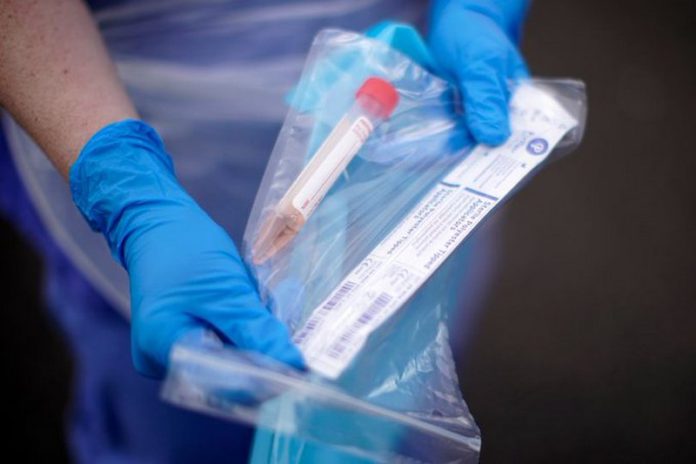
As the number of novel coronavirus cases continues to rise at an alarming rate across the globe, India has already reported close to 5 lakh cases and 15,000 deaths. The sad part is, even with dedicated guidelines, safety precautions and stringent lockdown measures, there is a huge spike in the number of recorded cases in India as the country reported 16,922 new cases in the last 24 hours.
While the medical researchers and experts are working round the clock to develop a cure to combat the highly infectious contagion, there is still no definite date for rolling out a vaccine fit for human use.
The lurking danger apart from the COVID pandemic
In addition to the deeply worrying statistics of the novel coronavirus pandemic, there is yet another grave danger lurking in the country. According to the annual report of the national tuberculosis elimination programme, India reported over 24.04 lakh tuberculosis cases in the year 2019 and notified more than 79 thousand death due to the severe bacterial disease. The shocking statistics shed light on the fact that the number of tuberculosis cases has increased by 14 % when compared to 2018 reports. The death rate of 79,000 brings it roughly to 20,000 deaths every three months in the country, making it deadlier than the COVID-19 pandemic, which has claimed close to 15,000 lives in the last 3 and a half months.
Additionally, even as the official TB report 2020 claims that India reported 79,144 deaths owing to the highly-infectious bacterial disease, the WHO report estimates otherwise. According to a report published by the World Health Organization, an estimated 4.4 lakh people in India have died due to tuberculosis in the year 2019. However, the country reported fewer “missing cases” of the bacterial infection (10 lakh in 2017 to 2.9 lakh in 2019). For the uninitiated, missing cases is known as the gap between estimated cases and officially recorded cases.
How infectious is tuberculosis
Tuberculosis is caused by a bacteria Mycobacterium tuberculosis which usually infects a patient’s lungs, even though it may attack other body parts as well and it is an air-borne disease. This highly-infectious disease spreads from one person to another through the infected droplets which are ejected from the mouth of a person, when he speaks, sneezes, coughs or even sings. The disease is highly infectious as according to the data provided by the World Health Organization, an infected person can spread the disease to “5 to 15 other people through close contact over the course of a year”.
It is important to note that low and middle-income countries including India, China, Indonesia, Philippines, Pakistan, Nigeria, Bangladesh and South Africa account for two-thirds of new tuberculosis cases globally. According to WHO, India has the highest number of TB cases worldwide, underling the need for immediate attention and action, especially during the COVID pandemic.
Symptoms of tuberculosis
Some of the most common symptoms of this disease include:
1. A bad cough which doesn’t seem to be going away (more than 3 weeks)
2.Coughing up blood
3. Weight loss
4. Weakness
5. Fatigue
6. Chest pain
7. Chills and fever
The horrendous impact of COVID pandemic on TB patients
As the novel coronavirus outbreak continues to push the country’s medical care system to the brink, new studies highlight the grave consequences of the COVID pandemic when it comes to monitoring, early detection and timely treatment of TB patients.
According to a study published in European Respiratory Journal (ERJ), close to 95,000 people may die in India from tuberculosis as a direct result of overwhelmed health services, delay in diagnosis and treatment of the disease–all due to the ongoing pandemic. India has already become the fourth worst-hit country by the pandemic leading to an enormous amount of pressure on doctors, frontline workers and the complete healthcare system.
The study conducted by the London School of Hygiene & Tropical Medicine and Lancaster University, pointed out that as the country continues to grapple with the spread of the highly contagious novel coronavirus, active searching and screening of TB patients to detect the disease could take a hit, leading to a sharp rise in TB-related deaths in India.
Tuberculosis is treatable and preventable
It is important to note that a vast majority of tuberculosis cases can be treated with timely diagnosis and proper medication. Since the TB disease is of two types, latent TB infection and TB disease, the symptoms may be mild enough to go undetected in a lot of cases which may lead to further spread of the disease.
Latent TB infection means that you have the bacteria in the body, but it is not making you sick or showing any symptoms. On the other hand, if you have active disease, you may experience typical symptoms of TB and you will be able to spread it through infected droplets as you speak, cough, sneeze or sing.
The treatment for TB often constitutes of six to nine months of “Directly Observed Therapy” in which several anti-TB medications are given to the patient including isoniazid and rifampin (two of the most powerful anti-TB drugs.) It is important to note that even during the spread of novel coronavirus, TB continues to be a real threat to the health of an estimated 10 million people worldwide. This is why if you experience any of the signs or symptoms of tuberculosis, it is important to reach out to your medical care provider immediately to get timely diagnosis and treatment, if required.
